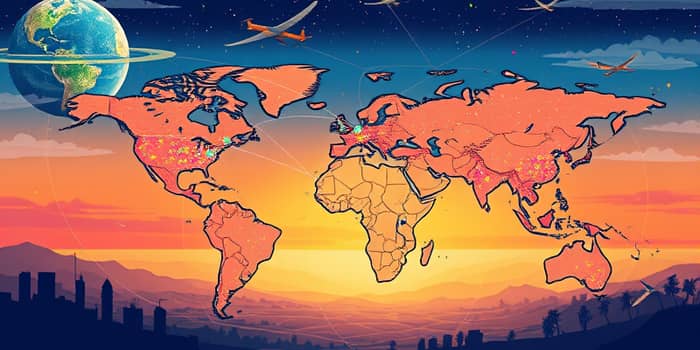
In today’s data-driven landscape, geospatial analytics are transforming decision-making across industries. By mapping spatial relationships and detecting patterns, businesses and governments alike can pinpoint burgeoning opportunities and address challenges with precision. This article explores how geospatial data reveals niche market trends and offers practical insights for innovators seeking a competitive edge.
The global geospatial analytics market was valued between $38.3 billion in 2024 and $95.84 billion in 2025, with forecasts predicting expansion to over $258 billion by 2032. When combined with geospatial solutions—encompassing software, systems, and services—the sector’s valuation soars from $626.13 billion in 2024 to $2.15 trillion by 2034 at a CAGR of 13.16%. Projections for 2035 even hint at surpassing the $2 trillion threshold.
Growth rates vary by segment: software leads in revenue, services grow fastest at 12.9% CAGR, and cloud deployment captured 56% share in 2024—driven by scalable, on-demand analytics capabilities. Core market CAGRs range from 7.1% to 14.2%, reflecting regional and technological diversity.
Advancements in core and enabler technologies are igniting new use cases. Key pillars include:
Together, these tools deliver unparalleled spatial insights at scale, enabling organizations to monitor environments, optimize resources, and predict future trends with increasing accuracy.
From smart cities to precision agriculture, geospatial data is revolutionizing sectors worldwide. The table below highlights major application areas and their niche impacts.
Small-scale, hyper-local applications are gaining traction as costs fall and cloud platforms democratize access. Consider these emerging use cases:
These examples underscore how micro-targeted geospatial insights unlock value in unexpected corners of the market.
Geospatial uptake varies by region, shaped by urbanization, regulatory frameworks, and public funding. In North America, the U.S. dominated 86% of the market in 2024 ($12.1 billion) and is projected to reach $39.29 billion by 2032. Europe’s growth is fueled by smart city grants, especially in Germany. Asia-Pacific—led by China and India—is accelerating adoption through rural digitization programs and infrastructure projects.
Emerging economies leverage geospatial tools for resource mapping, disaster risk reduction, and precision agriculture—highlighting diverse regional use cases that reflect local priorities.
Several trends promise to reshape the geospatial landscape in the coming years:
Together, these forces will catalyze precision environmental monitoring and create new avenues for niche solutions.
By harnessing geospatial analytics, organizations achieve significant cost savings and performance improvements. Governments optimize public spending through better infrastructure planning, while businesses unlock new revenue streams via data-driven decision-making. Precision farming reduces input waste, utilities minimize downtime, and retailers increase conversion rates—all thanks to spatial intelligence.
Moreover, geospatial tools are integral to sustainability initiatives, enabling carbon footprint tracking, deforestation monitoring, and disaster resilience planning in alignment with global climate goals.
Despite compelling benefits, several challenges persist:
Addressing these barriers through training programs, open standards, and robust governance frameworks will be key to unlocking further growth.
Geospatial analytics stand at the forefront of technological innovation, revealing niche market trends that traditional data sources cannot. From smart cities and precision agriculture to retail hot spots and emergency response, spatial data empowers stakeholders to make informed, strategic decisions.
As AI, cloud computing, and satellite networks advance, the geospatial field will continue to expand into new frontiers—fueling cost-efficient resource deployment and unlocking novel business models. Organizations that embrace these capabilities today will be poised to thrive in tomorrow’s hyper-connected, data-rich world.
References





